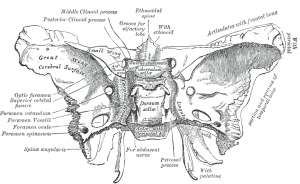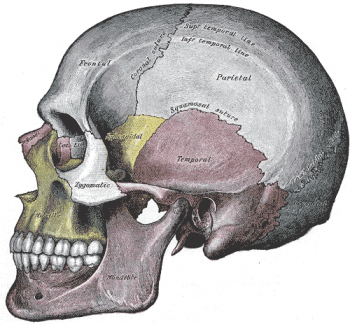FAQ
What is Osteopathic Medicine?

Osteopathic Medicine is the full practice of medicine and more! As Osteopathic Physicians we are guided by the Osteopathic philosophy both in our hands on treatment and in our medical and surgical management. The Osteopathic philosophy holds that the body is a unit. When part of the body is unhealthy it affects the whole. Likewise, health of the whole assists in the healing of a part of the body. In my practice this philosophy is manifest most directly by how I treat the whole person in each treatment.
The body is self healing and self regulating. The body is at each and every moment doing its utmost to heal and change. During Osteopathic Treatment and particularly with Cranial Osteopathy the physician is working to assist the self healing tendency. In my work I am removing physical blockages in movement at the level of the joints, ligaments, muscles, fascia and membranes so that the body can better go about its work of healing.
Structure and function are interrelated. The structure of the body is important! Our human body is the structure in which we live, move and have our being. If our structure is disrupted, if there is significant restriction in movement of certain ribs for example, then there will be a loss of function. There will be less oxygen reaching the lungs, less lymphatic flow through the main lymphatic channels, and impaired movement of blood flow through the major arteries and veins. When treatment is applied and motion restored to the rib cage, improved circulation results. Appropriate Osteopathic Treatment incorporates these principles. When we understand the body as a unit, as self-healing and as structurally and functionally related we are able to assist the patient’s healing in a powerful way.
What is Cranial Osteopathy?
Cranial Osteopathy is part of the practice of Osteopathic Medicine. What is unique about Cranial Osteopathy is that the D.O. actually assists the body’s own healing forces during treatment. There is a dynamic interaction occurring during treatment where the D.O. senses mechanical restriction and obstructed fluid flow, makes a diagnosis, and then facilitates release.
Cranial Osteopathy sounds like it would deal with the head. It does indeed deal with structural and fluid restriction in the head, and frequently is helpful in treating headaches, head injuries, infants who have had difficult deliveries (strain to the head), plagiocephally (asymmetric head), ear infections and sinus infections, but Cranial Osteopathy does much more!

With Cranial Osteopathy the Osteopathic physician interacts with a cyclic fluctuation of fluid within the body. This fluctuation is believed to be a result of movement of cerebrospinal fluid, cranial and spinal membranes, cranial bones and the brain. The overall movement can be felt through the entire body. Osteopathic physicians specializing in Cranial Osteopathy are trained to sense this movement with their hands, make a precise diagnosis, and treat to assist this normal, healthy movement which should be present.
Cranial Osteopathy involves interacting with this fluid movement through the entire body, while at the same time addressing structural restriction of joints, ligaments, muscles and fascia. Because Cranial Osteopathy is grounded in treating the structure of the body it is frequently helpful for back problems, neck problems, and other musculoskeletal complaints, not just problems with the head.
When diagnosis and treatment is done on the head it addresses general and specific restrictions which are present in the cranial membranes, between the cranial bones, within the bones (especially in infants and children when some bones are not fully formed), within areas of the brain, and of the fluids in the head (blood and cerebrospinal fluid). A D.O. specializing in Cranial Osteopathy will not treat just the cranium; he or she will treat the pelvis, the sacrum, the vertebrae and ribs too. This broad approach is necessary to successfully assist the complex human body and to find the underlying cause of a patient’s condition.
What age can you start treatment?
Treatment can be done at any age. One of the best and most important times for treatment is for the newborn. Gentle, precise Cranial Osteopathy can release strain from the birth process and strain related to limited space in the uterus during the third trimester. Older patients benefit from treatment too. Many of my patients are thankful for the way I can release deep and significant dysfunctions using gentle forces that are appropriate for their stage in life.
How often should I come for treatment?
In general I recommend that everyone have one treatment yearly or every six months. Life causes a lot of physical strain in our bodies and I believe treatment can release some of these significant strains and assist in the prevention of disease. For patients coming with a specific complaint the best interval for the initial several treatments is usually weekly. After that it really depends on the individual. Recommendations vary from continued weekly treatment in chronic or difficult cases to monthly or bimonthly treatment until adequate improvement has occurred.
How many treatments will I need?
The number of treatments varies from 2 or 3 to 6 or more. It depends upon the severity of the problem, its duration, and the body’s own response to treatment. Difficult, chronic problems may require long term treatment.
Does treatment hurt?
Treatment itself is quite gentle. Every once in awhile I may find a tender spot and put pressure on it to release it. Patients sometimes have discomfort in the first 24-48 hours after a visit as they process the treatment.
How long will it take to feel improvement?
This response varies from patient to patient. In general more recent, simple problems respond more quickly than chronic, complicated problems. Cranial Osteopathy is usually not a quick fix for difficult issues. Some conditions like Autism or significant chronic back problems will require ongoing treatment.
Do you do Craniosacral therapy?
Many or perhaps most of my patients refer to the work I do as Craniosacral Therapy. Technically the work I do is called Cranial Osteopathy. Oftentimes the term Craniosacral therapy is informally used when referring to Cranial Osteopathy, because it is a handy, descriptive term.
What is the difference between Craniosacral Therapy and Cranial Osteopathy?
Cranial Osteopathy is grounded in structural treatment of the whole person. Cranial Osteopathy involves treatment of the cranium, the sacrum and everything in between on both a structural level and a fluid level. It is grounded in the study of Osteopathic Medicine which requires an undergraduate degree and fulfillment of premedical school requirements, plus four years of full medical school, and usually at least three additional years of full-time residency training. It takes many, many years to develop this expertise (at least 11 years after high school). During this training and while in practice, specialization can be obtained in Cranial Osteopathy. The Certificate of Cranial Proficiency, which I hold, requires all of the above; written, oral and practical exams; plus five years in clinical practice.
Craniosacral therapy addresses movement of fluid and energy at the cranium and sacrum and sometimes through the body. It came out of Cranial Osteopathy and is a simplified approach to a complicated system. Craniosacral therapy is done by a large variety of practitioners with varying amounts of education and experience. Since Craniosacral is taught to practitioners without full medical training, and without comprehensive structural training it tends to be less helpful in addressing the underlying cause of medical conditions. While Craniosacral therapists are able to help many patients, it is important to understand the limitations of this discipline. Particular care should be taken when selecting a practitioner for infants or children whose systems are less fully developed.
Is your treatment similar to Chiropractic?
Chiropractic work traditionally uses quick thrusts to address poor alignment of the vertebrae. Osteopathic treatment does treat the vertebrae specifically. Instead of a quick thrust I usually balance the vertebra along with its surrounding muscles, fascia and ligaments. This releases the entire pattern rather than just the joint. Another important difference is that Osteopathic Medicine is more holistic. Chiropractic generally focuses on releasing nerves that are impinged at the level of the spine. Nerve impingement is very important with Osteopathic Medicine but we also release restrictions throughout the body including large patterns of restriction in the fascia, local muscular restrictions, restrictions in the blood flow and cerebrospinal fluid, and restrictions within the membranes and bones of the cranium.
Is Osteopathy similar to acupressure?
No, acupressure is based on the Chinese model of meridians and pressure is applied to points along these meridians. Osteopathy is based on the Western understanding of anatomy and physiology: specific bones, ligaments, muscles, nerves and blood vessels.
Where can I find a D.O. near me who does this kind of work?
The Cranial Academy and the American Academy of Osteopathy have resources available online. In the state of Washington you can check with the Washington Osteopathic Medical Association.
Treatment Tips - Infants And Children
Infants And Children
For infants and toddlers you can bring along a couple favorite toys or a binky (if you are using one). I have toys to help distract during treatment. IPODs with children’s applications, cell phones with pictures, or cameras with short videos can be helpful during challenging treatments. We will work as a team to keep your little one as happy as possible through the treatment!
Sometimes infants will cry during treatment, while this can be upsetting, and we try to avoid it if possible, it is important to realize this is the way they express themselves. Treatment is exceptionally gentle and is not painful.
After treatment infants and children may be a bit more tired than usual. They may nap for a longer period than usual or might “melt down” earlier than usual. Occasionally there can be some increased fussiness over the first 24 hours after treatment as a result of tiredness and processing the treatment. Many parents report their infant or child has a very good night of sleep after treatments.
If your infant or child has a cold, ear infection, or sinusitis do come for treatment. Osteopathy will often help. If your child has possible influenza (fever and chills with body aches and a cough) or stomach flu then reschedule to 24 hours after fever has subsided or vomiting has occurred.
We are kid friendly. Your children are welcome in our office!!!
Older Children & Teens

It is best to wear light, loose fitting, soft clothing for treatment (no jeans). Light pants are better than skirts.
In the first 12-24 hours after treatment avoid unnecessary lifting, bending and twisting, as well as intense exercise. Athletes, performers, and those who do physical work may not be able to avoid the above activities, but will still generally benefit from treatment.
If possible allow at least 24 hours between this treatment and any other manual modality, including massage and acupuncture.
If something is sore during the 24 hours after treatment use ice not heat. Most patients with significant pain conditions will do better avoiding hot tubs and saunas immediately after treatment.
Walking is often the best exercise after treatment.
Most patients will feel good and relaxed after treatment sometimes immediate relief occurs, but not always. Occasionally patients will feel sore after treatment or will have temporary worsening of symptoms during the first 24 hours after treatment. This is normal and is a result of the body accommodating to the changes we made. I recommend using a cool pack on affected areas if needed. Be sure to let me know how you felt at the follow up visit or call the office if you have any concerns.